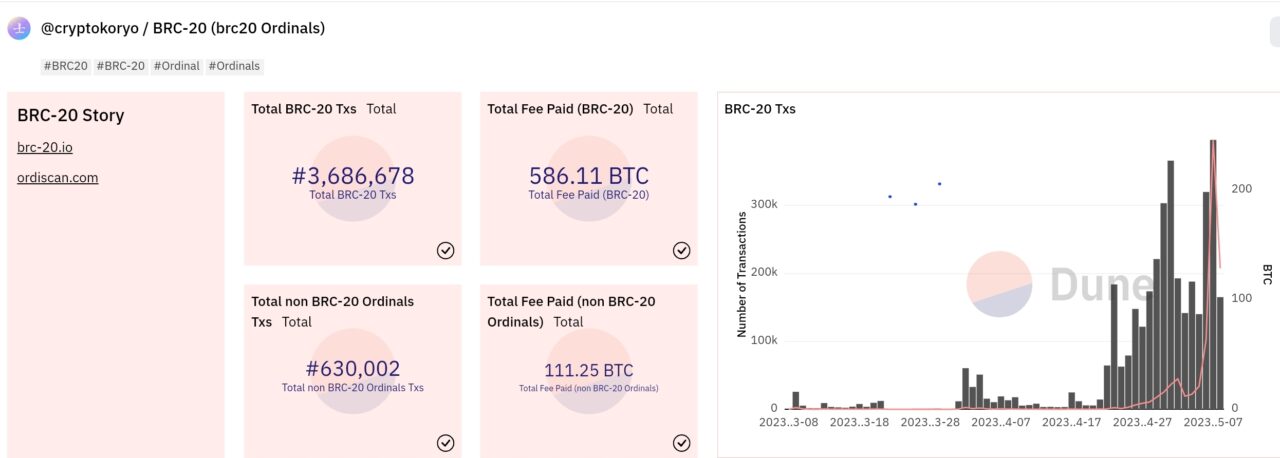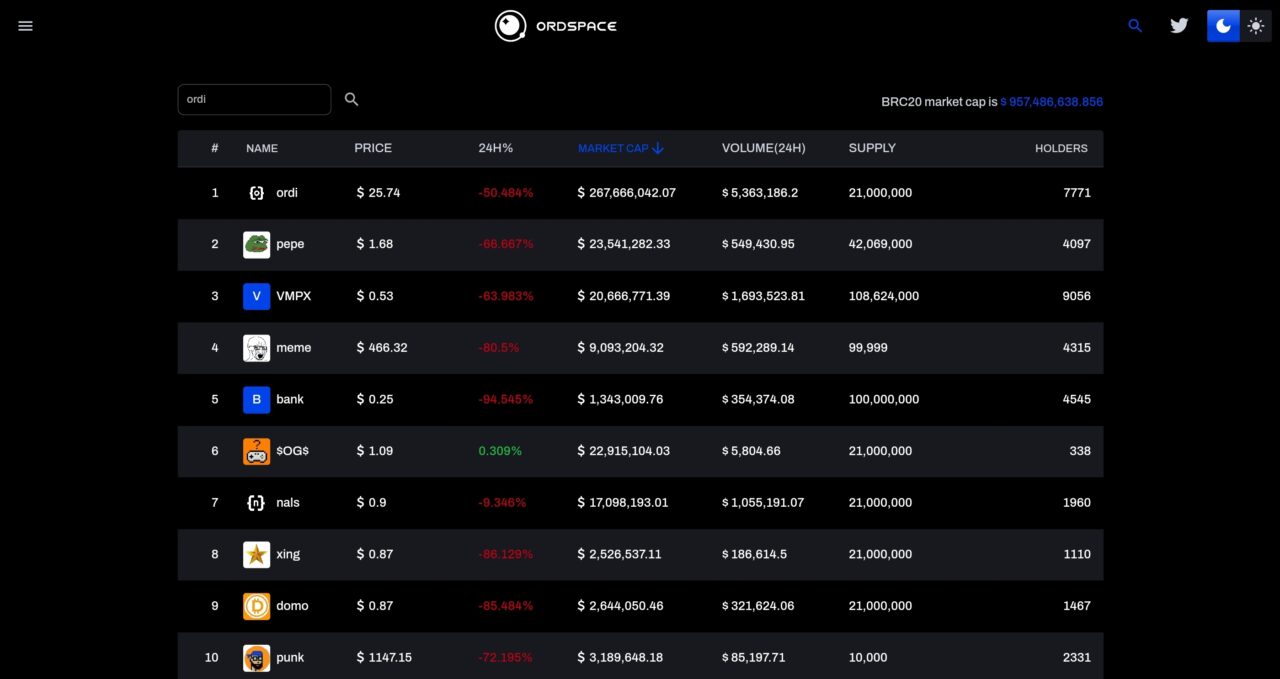Although memecoins have been around for years on the Ethereum blockchain (Dogecoin was launched in December 2013), the Bitcoin blockchain is now experiencing a similar trend, thanks to the BRC-20 token standard.
In this article, we’ll explore the memecoin craze on the Bitcoin blockchain and discuss how BRC-20 tokens are shaping the crypto ecosystem.
What are BRC-20 Tokens? The BRC-20 token standard is an experimental token standard on the Bitcoin blockchain, modeled after Ethereum’s ERC-20. Created in March by an anonymous on-chain analyst called Domo (“@domdata” on Twitter), the BRC-20 token standard allows programmers to create and send fungible tokens via the Ordinals protocol.
Unlike ERC-20 tokens, BRC-20 tokens do not make use of smart contracts and require a Bitcoin wallet to mint and trade these tokens.
The BRC-20 token standard has witnessed explosive growth in recent months, particularly with the advent of memecoins like Pepe (PEPE) and Memetic (MEME). In just four days, the BRC-20 token market capitalization skyrocketed from $95 million to $279 million, with more than 13,530 tokens in circulation.
According to a report by Bitcoi News published earlier today, the top five BRC-20 tokens, namely ordi, pepe, piza, meme, and moon, account for 86.55% of the total market capitalization. The BRC-20 memecoin frenzy has even outperformed the original number of Bitcoin transactions, with BRC-20 transactions reaching over 50% between April 29 and May 2.
The rapid growth of BRC-20 memecoins has had a significant impact on the Bitcoin ecosystem.
As of 8 May 2023, Bitcoin miners have earned 586.11 BTC from the BRC-20 ecosystem.

At the time of writing, here are the top 10 BRC-20 tokens (by market cap):









